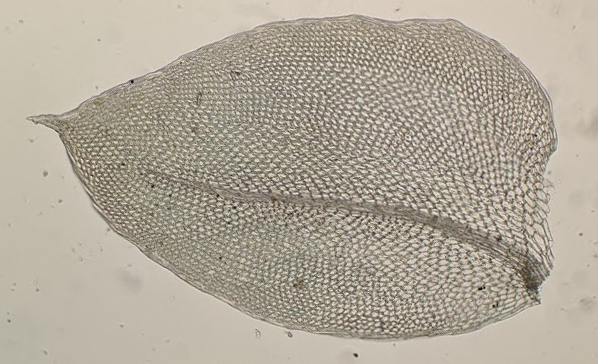Hypopterygium
Monoicous or dioicous. Asexual reproduction by filamentous gemmae produced on the stem, rachis or branches, usually near the apex, or by caducous branches. Loosely and densely gregarious stems arising from soil, rocks, logs, tree fern or tree trunks. Stems simple and undifferentiated (not in Victoria) or differentiated into stipe and rachis, prolifically pinnately to tripinnately-branched or flabellate, palmate or umbellate in rachis part, usually tomentose at least at base of stipe, terete; central strand present or absent (not in Victoria). Leaves complanate at least on branches, 3-, 8- or 11- or more ranked on stipe and basal rachis, otherwise 3-ranked, dimorphic in frond where 3-ranked or sometimes along stipe, with ventral leaves differing in size and shape from lateral leaves, otherwise isomorphic, weakly to strongly crisped or twisted when dry; costa simple, sometimes branched, extending 1/10 leaf length to excurrent, rarely absent (not in Victoria); hairpoint absent; margin entire to serrate, with a distinct continuous border of more elongated cells at least in frond leaves or frond leaves rarely without a border (not in Victoria) or border faint and discontinuous (not in Victoria); laminal cells short-linear, rectangular or hexagonal, thin-walled or incrassate, porose; stipe leaves appressed to wide-spreading, symmetric; lateral leaves spreading, asymmetric or symmetric; ventral leaves erect- to wide-spreading, symmetric. Seta projecting above the plane of the frond, rarely below (not in Victoria), smooth or weakly mamillose near capsule (not in Victoria). Calyptra cucullate, partly fleshy, glabrous. Capsule cernuous to pendent, straight. Operculum oblique-rostrate. Peristome double; exostome of 16 entire teeth; endostome of 16 processes; cilia present, absent (not in Victoria) or rudimentary (not in Victoria).
Ten species shared between tropical and southern Africa, eastern and south-east Asia, Malesia through to the Pacific Islands, Central and South America, Caribbean Islands, Florida and the Pacific coast of Alaska and Canada; two species in Victoria.
Hypopterygium has been expanded to accommodate two species previously included in Cyathophorum in response to findings from molecular phylogenetic studies (see Cyathophorum profile).
 Spinning
SpinningKruijer, H. (2002). Hypopterygiaceae of the world. Blumea supplement 13: 1–388.
Kruijer, H. (2006). Hypopterygiaceae, in McCarthy, P.M. (ed.), Flora of Australia, vol. 51, pp. 377–388.. ABRS and CSIRO, Canberra and Melbourne.

